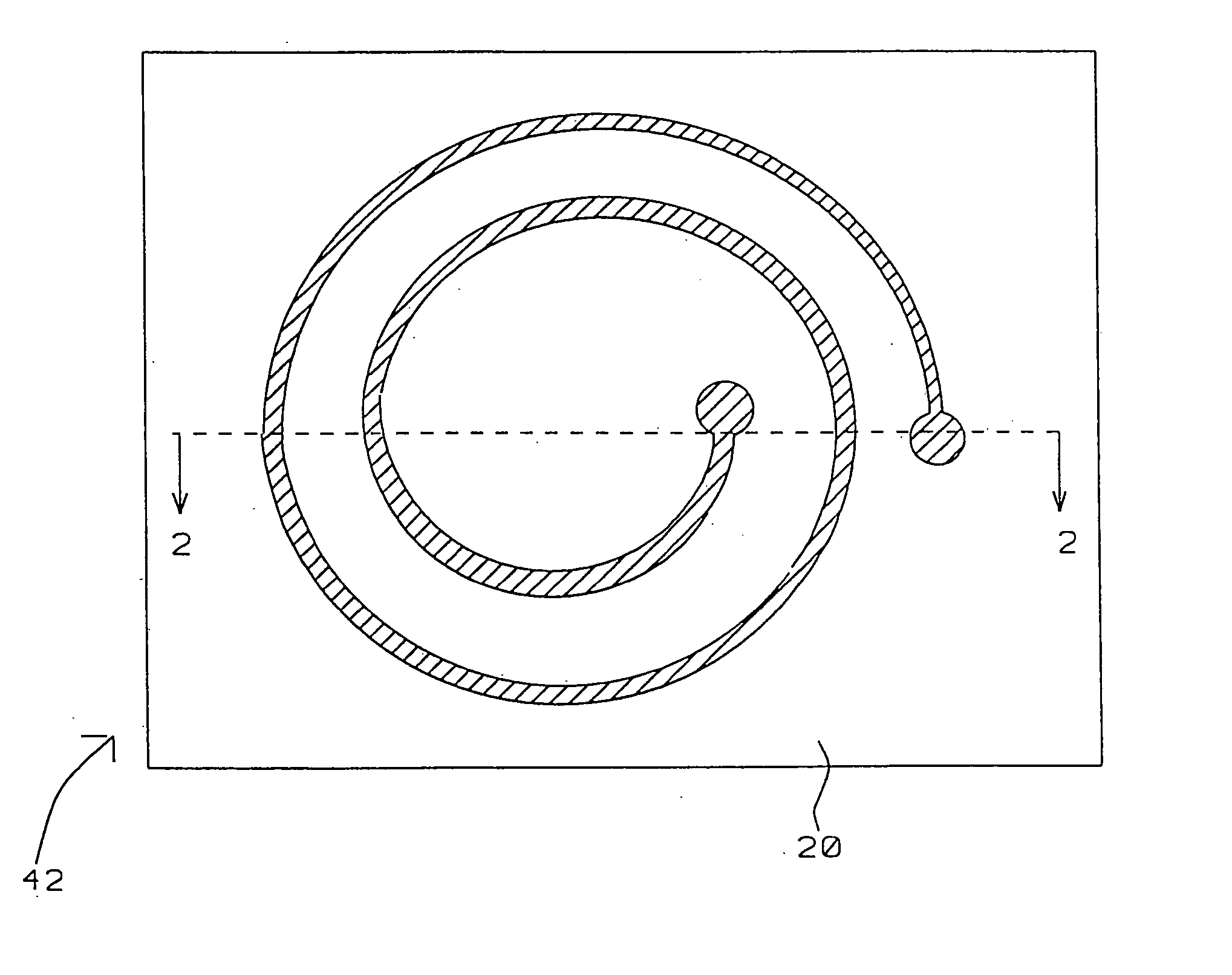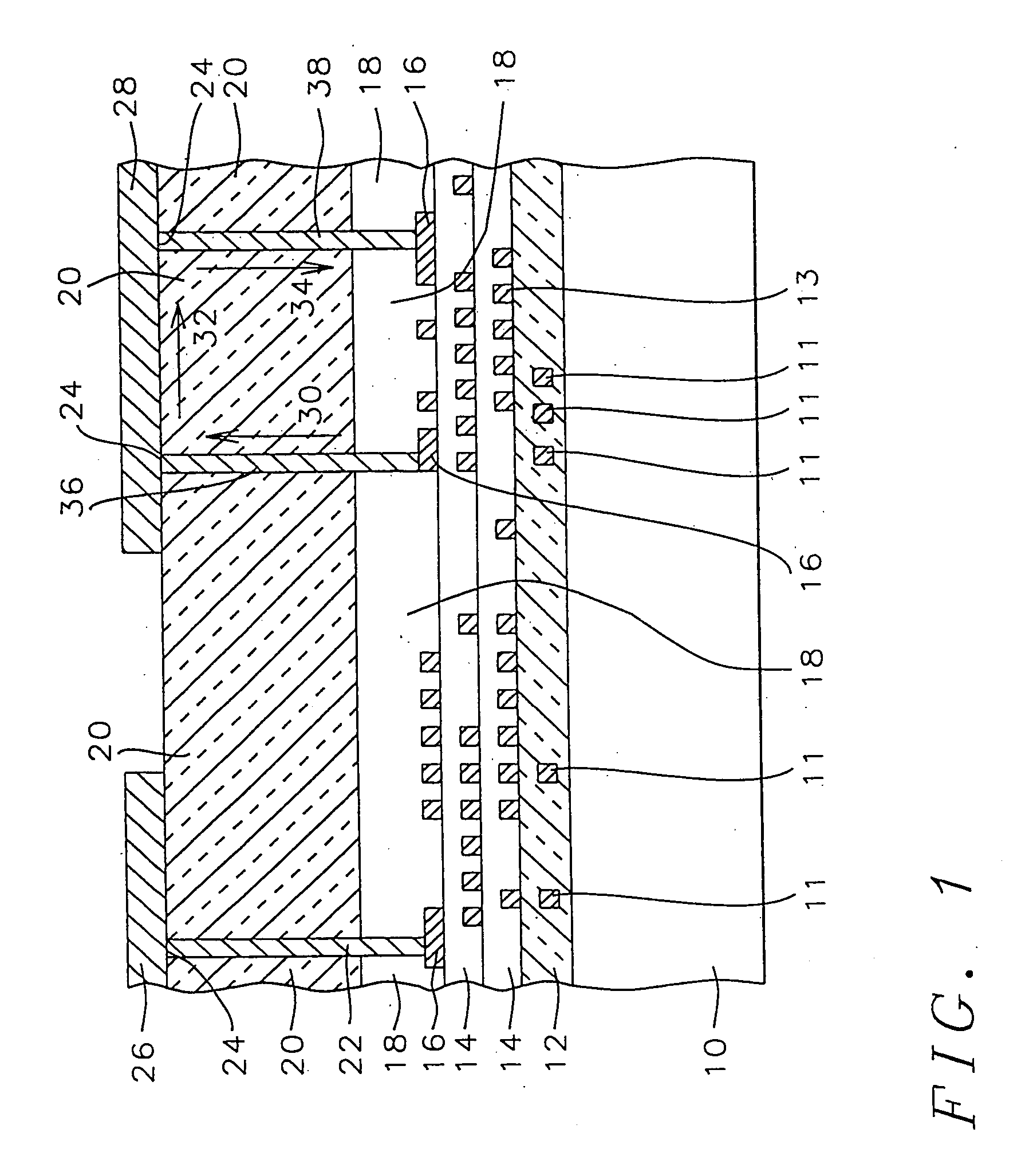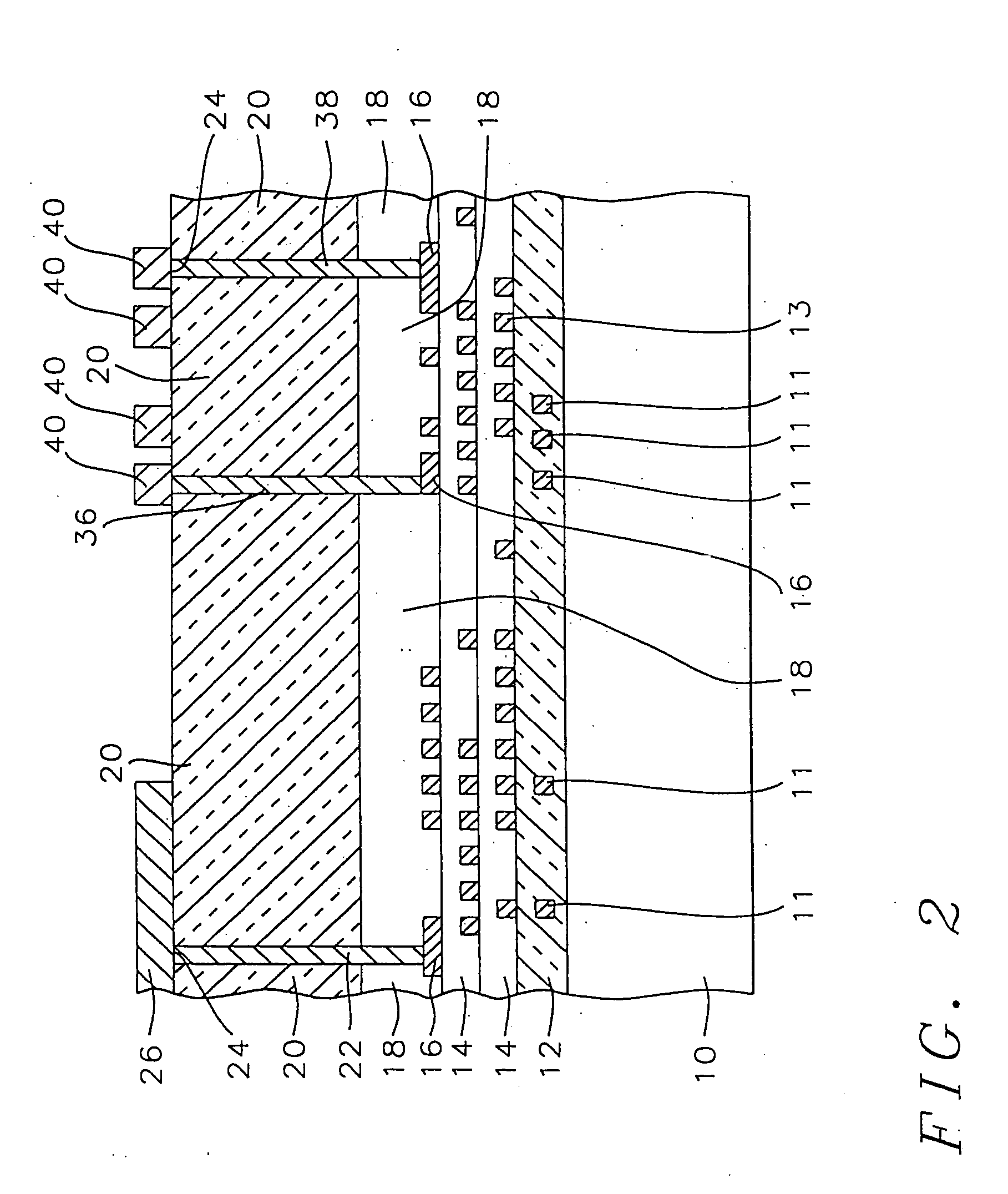High performance system-on-chip using post passivation process
a post-passivation process and high-performance technology, applied in the direction of semiconductor devices, semiconductor/solid-state device details, inductances, etc., can solve the problems of limiting the upper bound of the cut-off frequency that can be achieved for the inductor, and inability to meet the requirements of many applications, so as to achieve the effect of improving the rf performance of high-performance integrated
- Summary
- Abstract
- Description
- Claims
- Application Information
AI Technical Summary
Benefits of technology
Problems solved by technology
Method used
Image
Examples
Embodiment Construction
[0048] The referenced continuation-in-part application teaches an Integrated Circuit structure where re-distribution and interconnect metal layers are created in layers of dielectric on the surface of a conventional IC. A layer of passivation is deposited over the dielectric of the re-distribution and interconnection metal layers, a thick layer of polymer is deposited over the surface of the layer of passivation. Under the present invention, a high-quality electrical component is created on the surface of the thick layer of polymer.
[0049] The invention addresses, among others, the creation of an inductor whereby the emphasis is on creating an inductor of high Q value on the surface of a semiconductor substrate using methods and procedures that are well known in the art for the creation of semiconductor devices. The high quality of the inductor of the invention allows for the use of this inductor in high frequency applications while incurring minimum loss of power. The invention fur...
PUM
| Property | Measurement | Unit |
|---|---|---|
| thickness | aaaaa | aaaaa |
| distance | aaaaa | aaaaa |
| aspect ratio | aaaaa | aaaaa |
Abstract
Description
Claims
Application Information
 Login to View More
Login to View More - R&D
- Intellectual Property
- Life Sciences
- Materials
- Tech Scout
- Unparalleled Data Quality
- Higher Quality Content
- 60% Fewer Hallucinations
Browse by: Latest US Patents, China's latest patents, Technical Efficacy Thesaurus, Application Domain, Technology Topic, Popular Technical Reports.
© 2025 PatSnap. All rights reserved.Legal|Privacy policy|Modern Slavery Act Transparency Statement|Sitemap|About US| Contact US: help@patsnap.com



